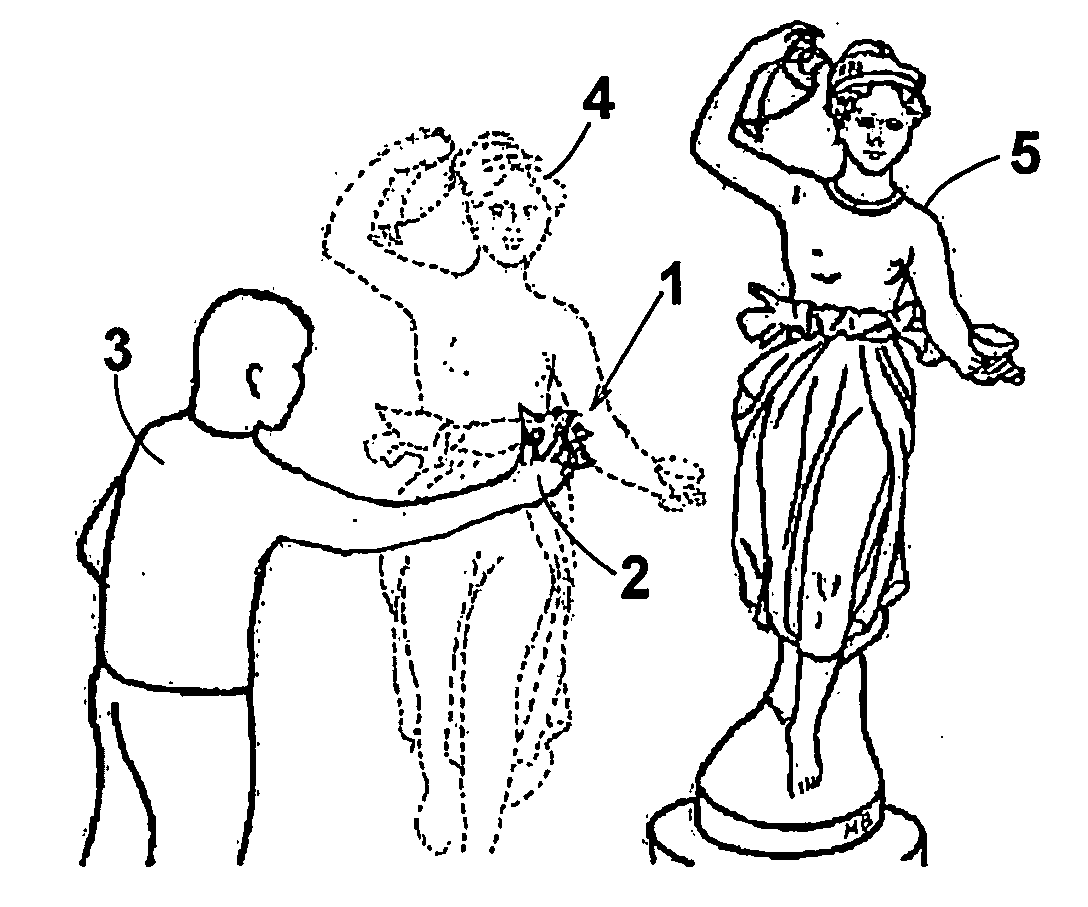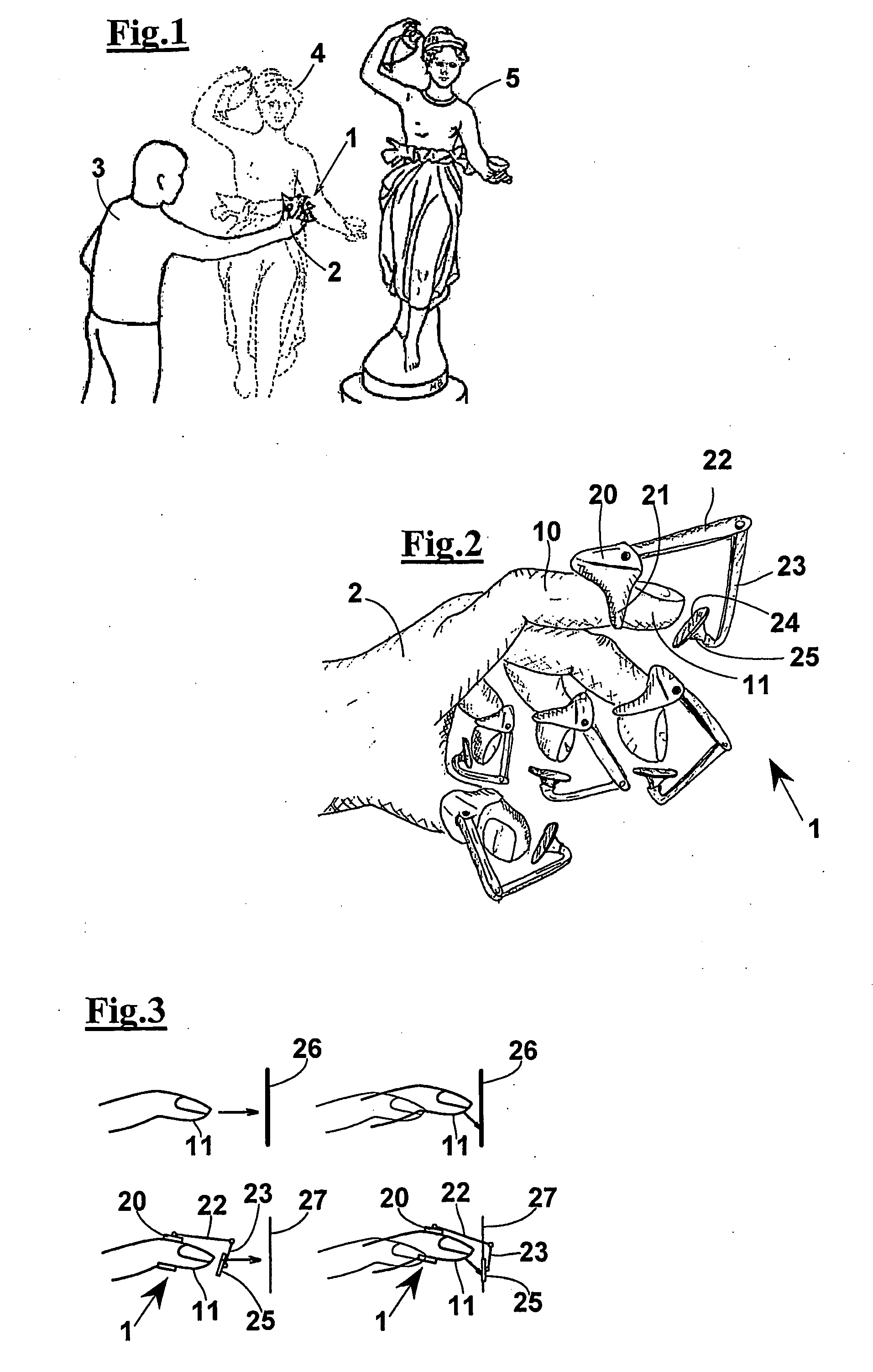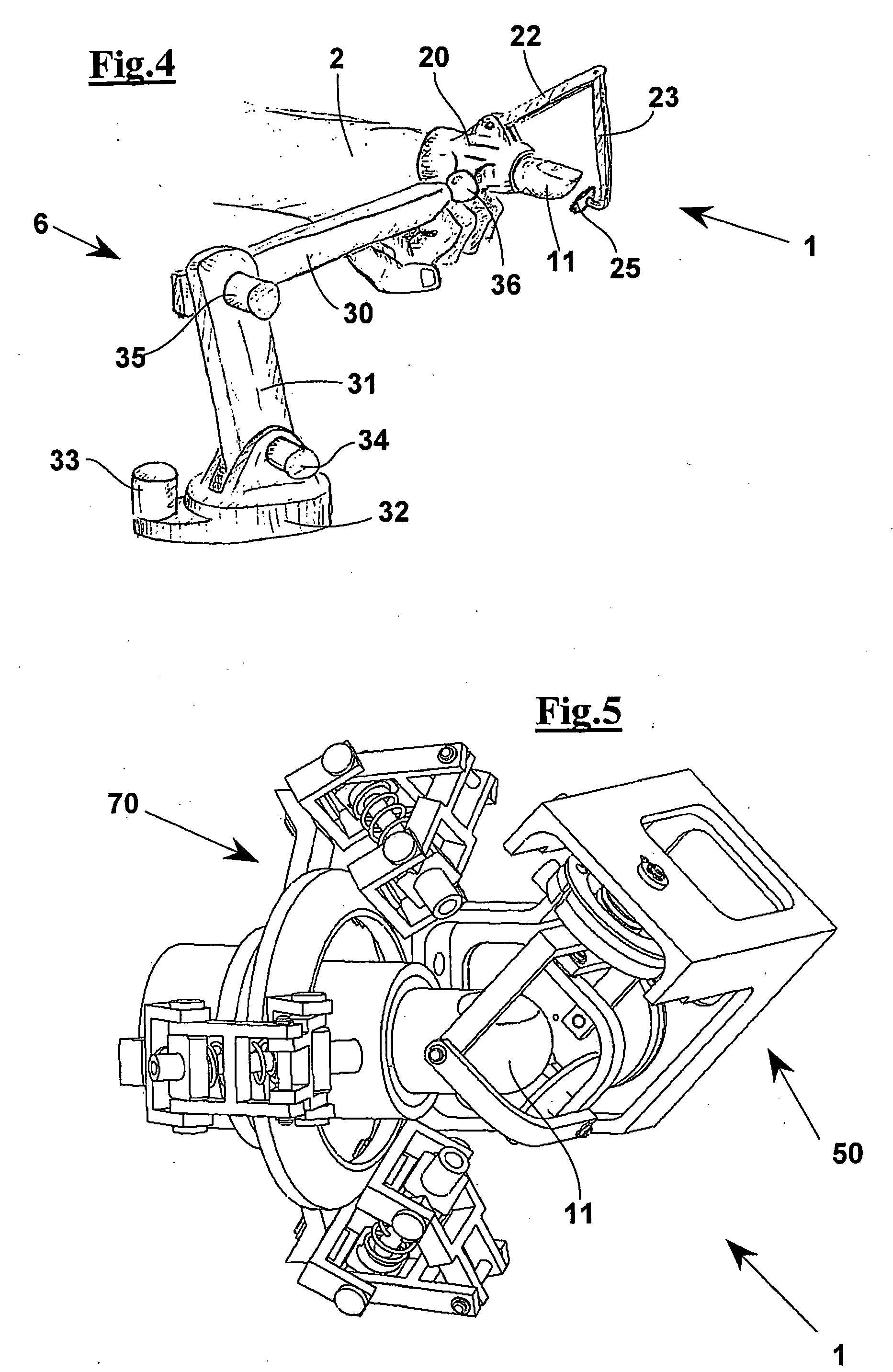Portable haptic interface
a haptic interface and portability technology, applied in the field of humancomputer interface devices, can solve the problems of not being able to generate a realistic perception, affecting the real stimulation of tactile receptors of users, and already saturated receptors on the fingertips of users, and achieve the effect of realizing the shape of virtual objects
- Summary
- Abstract
- Description
- Claims
- Application Information
AI Technical Summary
Benefits of technology
Problems solved by technology
Method used
Image
Examples
Embodiment Construction
[0087]In the following description, according to the invention, a human-computer interface device of haptic type is shown, i.e. capable of transmitting to an operator force and tactile sensations at the fingertips. More in detail the interface device is capable of orienting in space about a point an orientable surface and of approaching / withdrawing it to / from a fingertip, giving to an operator a tactile sensation to become aware of the shape of a virtual surface, in particular reproduced from a real surface. Furthermore, the haptic interface device, by touching the user's fingertip only at virtual points of contact with the real surface and reproducing a tangential orientation to this virtual surface in the point of contact, gives any tactile sensations on the fingertip during the motion in a free space, obtaining a very high level of transparency of the device. Furthermore, additional tactile sensations can be felt, such as the approaching direction, the orientation and the positio...
PUM
 Login to View More
Login to View More Abstract
Description
Claims
Application Information
 Login to View More
Login to View More - R&D
- Intellectual Property
- Life Sciences
- Materials
- Tech Scout
- Unparalleled Data Quality
- Higher Quality Content
- 60% Fewer Hallucinations
Browse by: Latest US Patents, China's latest patents, Technical Efficacy Thesaurus, Application Domain, Technology Topic, Popular Technical Reports.
© 2025 PatSnap. All rights reserved.Legal|Privacy policy|Modern Slavery Act Transparency Statement|Sitemap|About US| Contact US: help@patsnap.com



